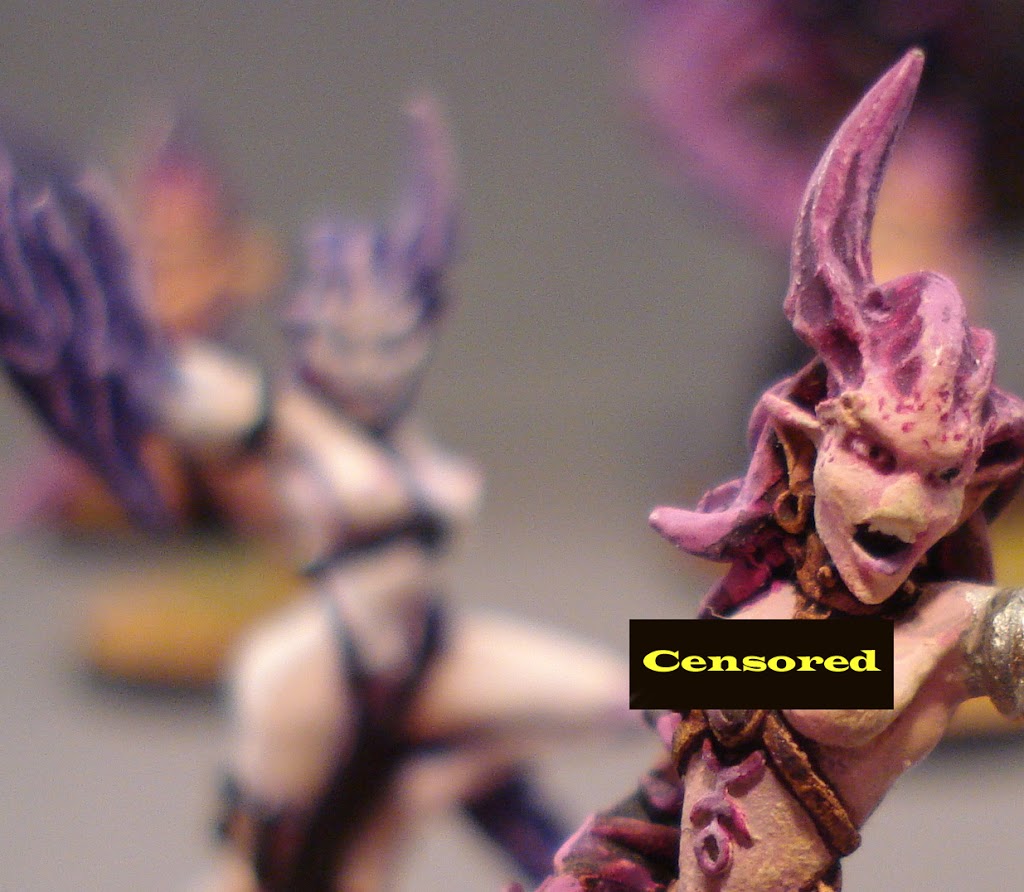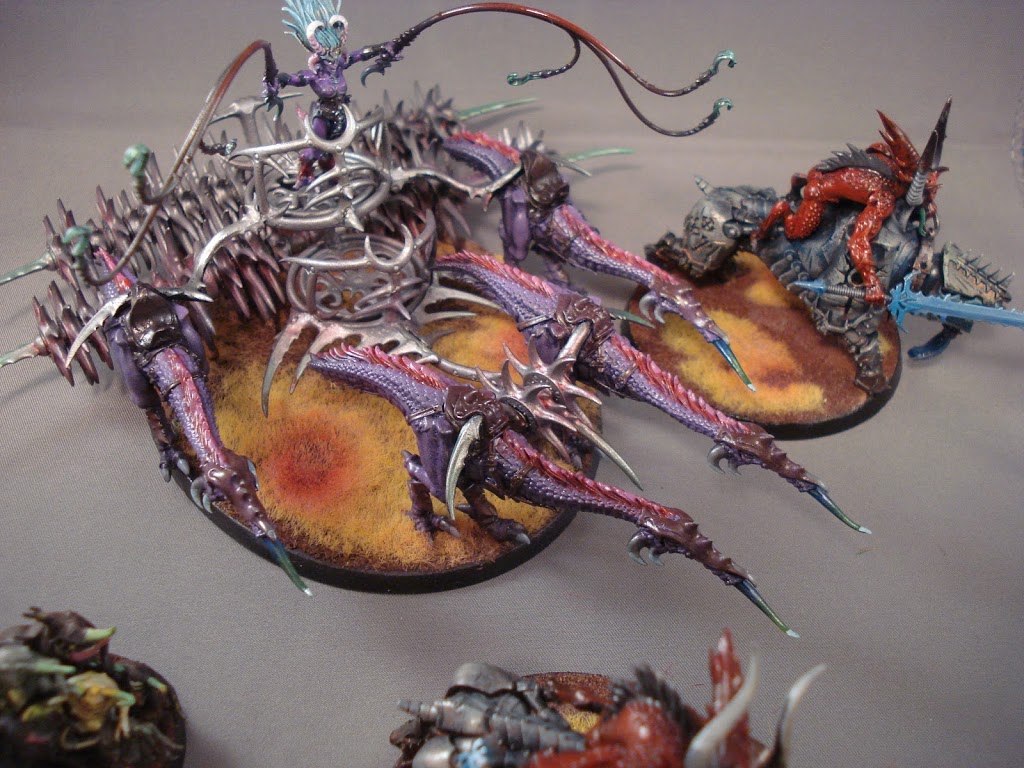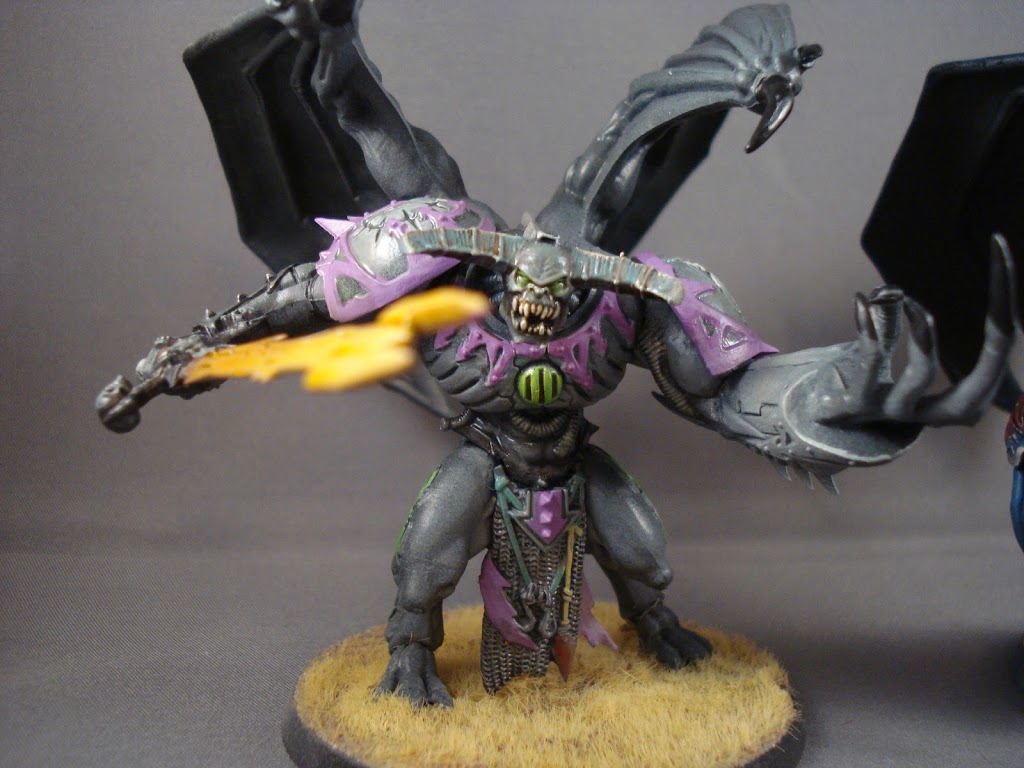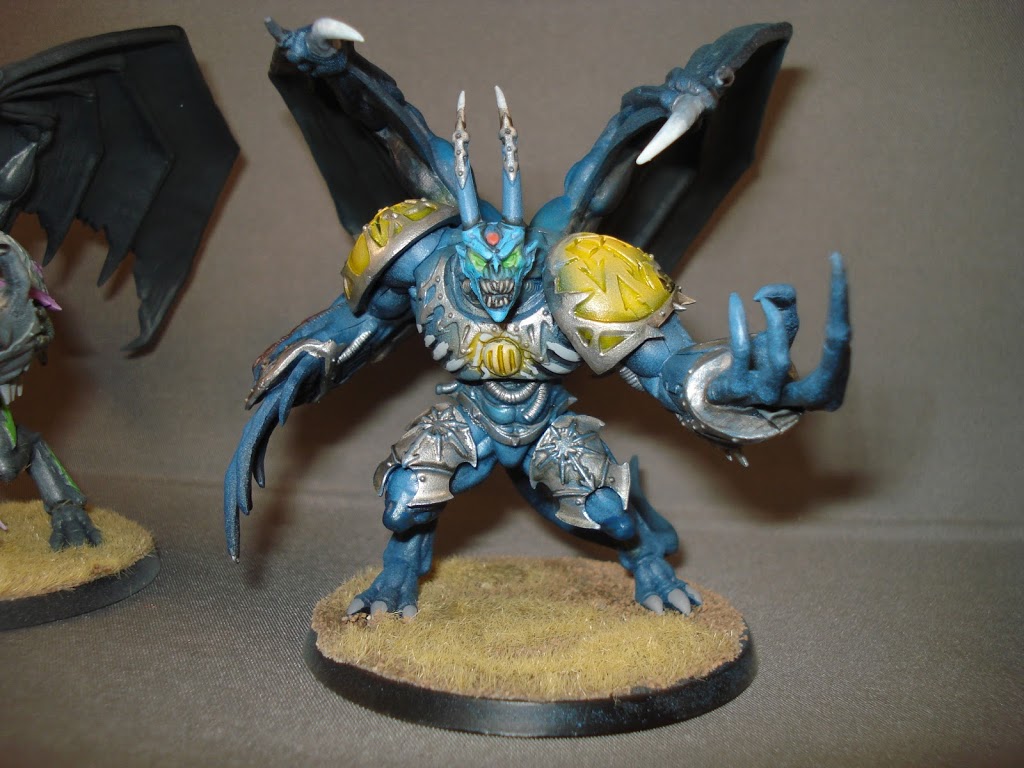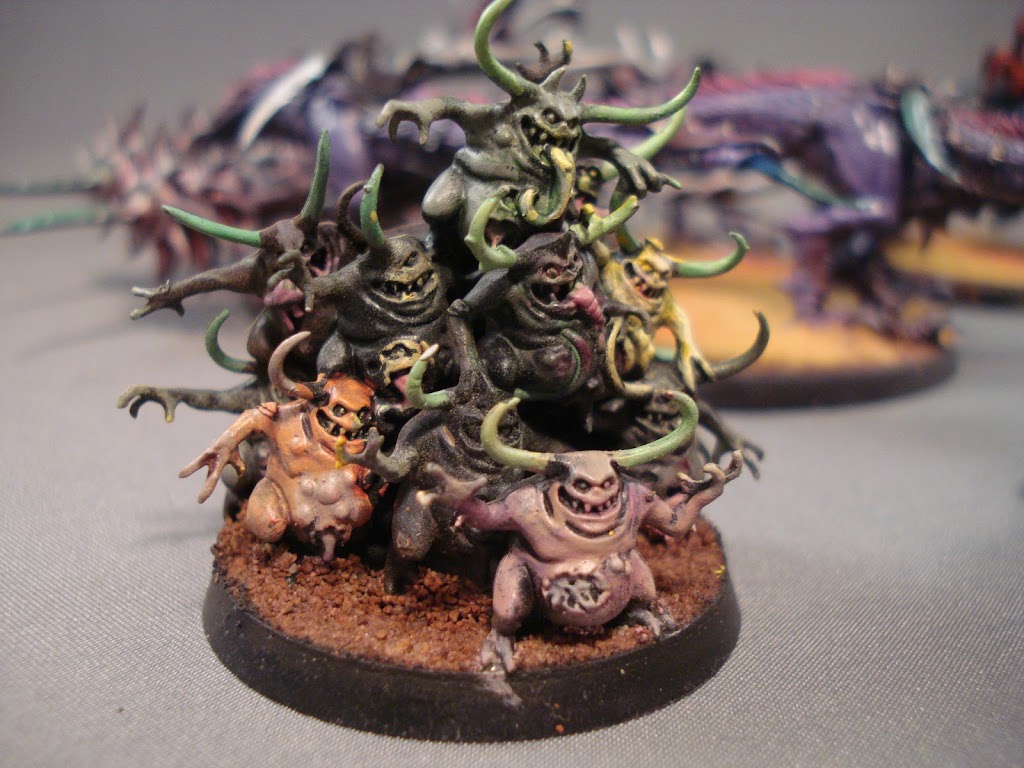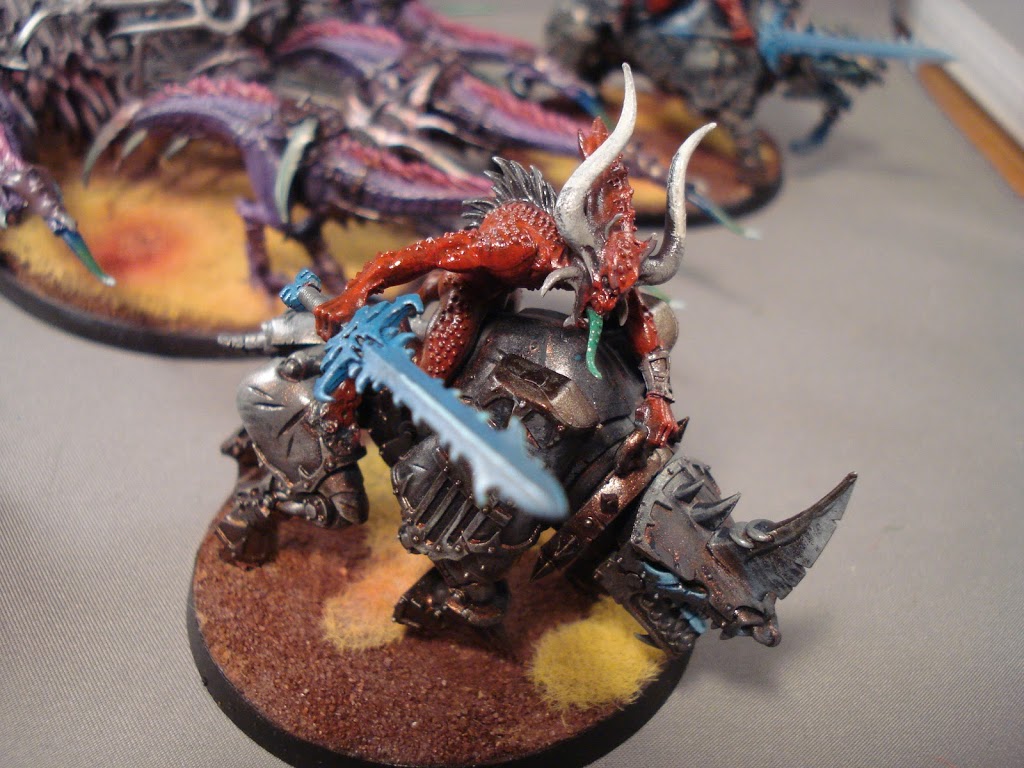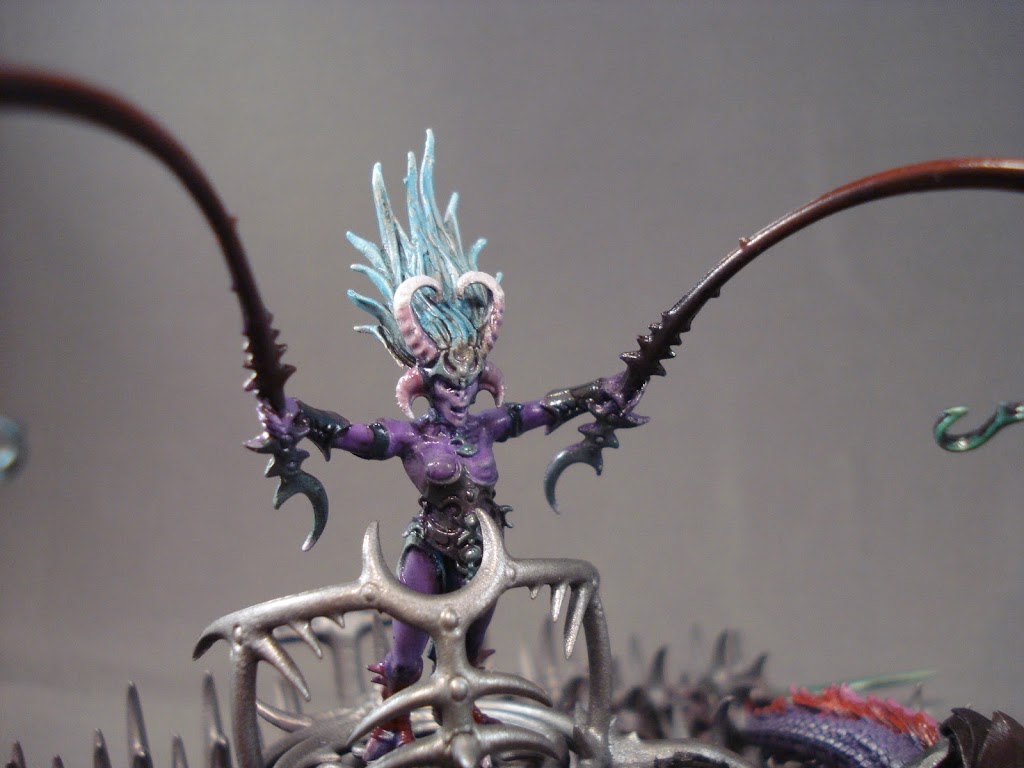Brent’s Daemonic Drivel for the Non-Daemonic Among You

Brent here, sitting in front of the keyboard with a Daemon’s Codex on my right and the 6th Edition rules on my left. Let’s step deeper into the heart of it, and break some of this down a bit.
But maybe not from my perspective so much.
You see, Daemons have been my favorite army for years now, and frankly I only set them down because my preferred list (the Bolts n Beasts build from ages past) was no longer viable. The first hit was Imperial Guard, but okay – there were ways to play for the win. Space Wolves were harder, but who doesn’t like a challenge? No, it was Grey Knights and Dark Eldar that put paid to my favorite army. Into the box they went, to wait until time – and the development studio – determined I’d waited long enough for a new book.
Well, Eldar and Ork players, hate on! Daemons are here and everybody is going to play them!
…
Except you aren’t, are you?
There are some like-minded chaps out in the Blogosphere who are learning the lingo and will swamp many a board with the Horde Plus Hammer variant of choice. These folks even now nightly press book to forehead, trying to soak up another nasty combo through osmosis or diffusion or prayer or something. You’ll see things like:
GUO lvl2 BioX2 GreaterX2 Woot! Two DP’s and two SG’s, hide the last two in cover and watch ’em cry!
If you read that and didn’t see the basic strategy and shape of the army lay out in front of you, you’re going to be the one playing against Daemons and not playing them. And there are things you should know before that happens.
As always, my hope is the audience will flesh out or flush out these ideas; it’s part of the fun!
A Quick and Dirty Breakdown
Let’s get the general knowledge out there for those who didn’t buy the book. Today’s article covers the HQ section only, but that’s a lot to cover.
For those of you who have played Warhammer Fantasy, this is very much a concept lifted and placed in the 41st Millennium. You have your Lords, great with the bashy or flashy, and your Heroes, with the swiss army knife approach of choices.
The ‘Lords’ are your Monstrous Creatures. The ‘bashy’ is the straight smack of a Bloodthirster, and its the combat monster it was in Fantasy and wasn’t quite before now.
WS 10 BS 10 S 6 T 6 W 5 I 9 A 6 Ld 9 Save 3+ 5+; a Flying MC with the Lash and Axe of Khorne and up to 50 points in Daemonic Rewards. The Lash, well, lashes at Str 6 AP 2. The Axe is also AP 2, with Decapitating Blow.
This monster is 250 points with no further upgrades. Don’t worry though, the Troops are cheap – you can afford him if you want to.
The ‘flashy’ is your Psychic Power, and yeah, you can include bashy and flashy in one ugly critter. The example I used above? Read that first part as Great Unclean One, Psyker Mastery Level Two, using Biomancy, with two Greater Rewards.
Ugh. Well, if you’ve ever struggled against a good Nid player than you’re familiar with how ugly Biomancy can make a Monstrous Creature. I won’t bore you with the details lest we get bogged down in minutiae, but have you ever heard the term ‘Force Multiplier?’ Biomancy potentially makes a dangerous critter many times more potent.
Now is a good time to mention Rewards, because many of the tactics this army can bring to bear makes use of combos of Psychic Power, Rewards (Lesser, Greater, and Exalted), and Loci – though this last is the bailiwick of the ‘Heroes,’ or Heralds.
Rewards are NOT purchased items, they’re purchased ROLLS! Before each game, roll on the corresponding chart. For example, our Great Unclean One, two rolls on the Greater Rewards Chart costs 40 points. There are no bad rolls; for example, what’s wrong with (2) Feel No Pain 4+? Or (3) Reroll Failed Invulnerable Saves? Or (1) +1 Wound, It Will Not Die!
But if you don’t like what you rolled, you can trade it in for the Daemon Weapon, or the (0) default option. Again, nothing bad here. The Great Unclean One can sport the Balesword with Poison 4+ and Touch of Rust.
For another example, how about the default weapon for Slaanesh, the Lash of Slaanesh, which is Assault 2d6 Str as user!
So bashy or flashy or both on Monstrous Creatures; the Big 4 Daemonic Baddies plus the option of a Daemon Prince – these are your Lords. Note also that purchasing one of these options also opens up Daemon Princes to the Heavy Support Slot, meaning yes, you can field and army with five Monstrous Creatures.
Again, using the original example, purchasing our Great Unclean One opened up the option to purchase a Daemon Prince of Nurgle in the Heavy Support Section. ‘Two DP’s and two SG’s’ means two Daemon Princes – one from the HQ section and a 2nd from the Heavy Support section, and two Soul Grinders of Nurgle.
Edited: The DP purchased as Heavy Support has to have the Mark of Nurgle, while the 2nd, purchased using the remaining HQ slot, would have to use one of the remaining three Marks. Thanks to Gurthrog for the catch!
Nurgle’s Mark gives you ‘Shrouded’ and Defensive Grenades, so why wouldn’t you hide in cover and shoot at range? We’ll cover the Soul Grinder next week, but you probably already know it’s the primary AA (anti-aircraft) platform for Daemons, but it doesn’t really do anything poorly. My current favorite is probably the Slaanesh option with Baleful Torrent. Remember, Torrent weapons place the small end of the flame template out 12″ then maximize the ugly all over a unit. It’s Str 6, AP 4 – nothing to sniff at!
Moving On
The Monstrous Creatures on steroids are great, but the Heroes Heralds are probably a more balanced, cost effective approach. The four basic Herald types represent the four Chaos Gods; Khorne, Tzeentch, Nurgle, and Slaanesh. Yes, there are the Special Characters from the last book, all supped up and shiny, but for my money the basic Heralds are the best option to implement your chosen strategy on your unsuspecting opponent.
So I’ve been using the ‘Fantasy lifted to Sci-Fi’ analogy to explain my take on this book; just like Heroes in Fantasy, Heralds in 40K mainly support the units. They do this in a number of ways, but the various Loci are the most obvious contribution.
A Locus is a ‘zone of control’ that will affect any Daemon in the Herald’s unit. Since only Daemons of the same Mark can form units, practically there are three possible upgrades per Marked unit. For example, a Herald with Slaanesh’s Greater Locus of Swiftness will only affect the unit the Herald of Slaanesh has joined.
The Loci don’t stack; if a more powerful Locus is present in the unit, that’s the effect the unit gets. Still, the use of the upgrades are obvious, adding a bit of extra weight to the Troops on the board… and not to get ahead of ourselves, but Daemons can afford a lot of Troops!
So, just like Rewards, there are three levels – again, they are Lesser, Greater, and Exalted. Since there are four options at each Locus level, one per Chaos God, specific to it, that’s 12 possible Loci you might have to keep track of. Knowing which Herald has which effect and where that Herald is at is vitally important. Add to that Psychic Powers which everyone but Khorne makes use of, and there are many, many possible combinations of nastiness to be aware of.
I’m not saying players will cheat, but players will cheat.
Not really. In my experience, we gamers are a pretty honest bunch, but the few bad apples ruin the bunch, so to speak. More often it’s just a case of armies with so many special rules being too easy to lose track of. Knowing a bit about what to expect will help you keep track of your opponent’s game.
Did I mention you can have up to four Heralds per HQ slot?
…
Worn out yet? More to come next week, when I’ll tackle Elites, Fast Attack, Heavy Support, and the all-important Troops. (And you know, Furies ain’t bad…)
That’s all folks! It was a lot to cover, and I’m aware of how much this article lacked. For those of you with the time, please share your thoughts on nasty combos or army list ideas.
Links to a blog article you may have already written are welcome!
So, thoughts? Comments? Hugs and gropings?

